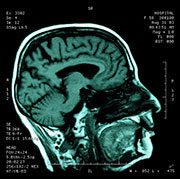
SUNDAY, May 10, 2015 (HealthDay News) — Prompt treatment of stroke is key to preventing death and disability, but not everyone knows how to quickly identify the early warning signs of stroke.
“Today, thanks to early detection, aggressive treatment and new intervention therapies, more stroke patients than ever are returning to normal life with limited to no disability,” said Dr. Stanley Tuhrim, director of the Stroke Center at Mount Sinai Hospital in New York City.
“Despite these accomplishments, it is clear that there is still much more work to be done to reduce the burden of stroke in our community. The challenge remains to educate as many people as possible about stroke’s earliest warning signs and symptoms, so patients can get the immediate treatment they need,” he said in a hospital news release.
Stroke is a leading cause of long-term disability and the fifth leading cause of death in the United States, killing nearly 130,000 Americans each year, according to the stroke experts at Mount Sinai.
When it comes to stroke, the more time that passes, the more damage occurs in the brain. People who get to the emergency room for treatment within three hours of experiencing their first signs or symptoms are generally the ones with the best outcomes, the experts said.
They offered these key facts about stroke:
- Anyone can have a stroke. The risk for stroke increases with age, but it can occur at any time. More than a third of people hospitalized for stroke are younger than 65 years old.
- Women have strokes more often than men. Each year, about 55,000 more women than men have a stroke.
- About half of all Americans have at least one major risk factor for stroke, including high blood pressure, high cholesterol or smoking.
- Race is also a factor in the risk for stroke. The risk for a first stroke is nearly double for blacks than whites. Hispanic people are also at greater risk for stroke than whites. Black people are also more likely to die from a stroke.
The experts also provided these tips to help you “BE FAST” in detecting the symptoms of stroke:
- B — BALANCE: A sudden loss of balance or coordination, such as not being able to walk a straight line or touch a finger to the nose.
- E — EYES: Sudden vision changes, such as double vision or blindness in one eye.
- F — FACE DROOPING: Droopiness or numbness on one side of the face, such as an uneven smile.
- A — ARM WEAKNESS: Weakness in one arm, such as not being able to raise both arms.
- S — SPEECH DIFFICULTY: Slurred speech or speech that is difficult to understand.
- T — TIME TO CALL 911: If any of the above symptoms are present, it’s important to call emergency responders or go to the ER right away, even if symptoms seem to disappear. Be sure to record the time when symptoms started.
More information
The American Heart Association provides more tips on how to recognize the warning signs of stroke.
Copyright © 2025 HealthDay. All rights reserved.

